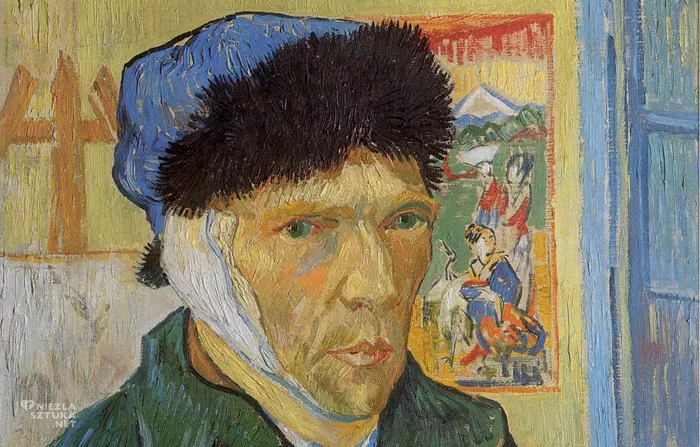Vincent van Gogh, one of the most famous and influential figures in Western art, is often remembered not only for his extraordinary paintings but also for his troubled mental health. Van Gogh’s life was marked by episodes of severe mental distress, which influenced both his art and his personal life. This article delves into the complexities of van Gogh’s mental illness, examining the symptoms he experienced, the diagnoses proposed by modern scholars, and the impact his mental health had on his work and legacy.
Early Signs and Symptoms of Mental Distress
Vincent van Gogh exhibited signs of mental distress from a relatively young age. His emotional instability and erratic behavior became more pronounced as he grew older, culminating in several severe episodes that significantly affected his life and work.
Early Life and Emotional Turmoil
Born in 1853 in the Netherlands, van Gogh showed signs of emotional instability during his early years. He was a sensitive and introspective child, prone to mood swings and bouts of melancholy. His early letters to his brother Theo, who would become his lifelong confidant, often reflect his inner turmoil and dissatisfaction with life.
Onset of Severe Symptoms
Van Gogh’s severe symptoms of mental illness began to manifest more clearly during his adult years. He experienced episodes of intense emotional distress, characterized by feelings of hopelessness, anxiety, and agitation. These episodes were often accompanied by periods of intense creative activity, suggesting a possible link between his mental state and his artistic output.
Episodes of Mental Breakdown
Vincent van Gogh’s mental health deteriorated significantly during his time in Arles, France, where he moved in 1888. It was here that some of his most famous and disturbing episodes of mental breakdown occurred.
The Ear Incident
One of the most well-known incidents in van Gogh’s life is the infamous episode in which he cut off part of his own ear. This occurred in December 1888, following a heated argument with fellow artist Paul Gauguin. Van Gogh’s self-mutilation was a stark indication of his severe mental distress and has been the subject of much speculation and analysis.
Hospitalizations and Institutionalization
Following the ear incident, van Gogh was hospitalized several times. He voluntarily admitted himself to the Saint-Paul-de-Mausole asylum in Saint-Rémy-de-Provence in 1889, where he spent a year receiving treatment. During his stay, he experienced alternating periods of lucidity and intense psychological distress, continuing to produce some of his most famous works, including “Starry Night.”
Diagnoses and Theories
Van Gogh’s mental illness has been the subject of extensive research and debate among scholars and medical professionals. Several diagnoses have been proposed over the years, reflecting the complexity and ambiguity of his symptoms.
Bipolar Disorder
One widely accepted theory is that van Gogh suffered from bipolar disorder, a mental illness characterized by extreme mood swings, including manic and depressive episodes. Van Gogh’s intense periods of creativity, followed by deep depression and self-destructive behavior, align with the symptoms of bipolar disorder. His prolific output during these periods of mania, coupled with his subsequent emotional crashes, supports this diagnosis.
See Also: Is Ginger Good for Hay Fever?
Epilepsy
Some researchers have suggested that van Gogh may have suffered from a form of epilepsy, specifically temporal lobe epilepsy. This condition can cause seizures, mood disturbances, and hallucinations, which van Gogh experienced. His vivid and often disturbed visions, along with his erratic behavior, have been linked to the symptoms of epilepsy.
Borderline Personality Disorder
Another proposed diagnosis is borderline personality disorder (BPD), characterized by unstable moods, behavior, and relationships. Van Gogh’s intense emotional reactions, fear of abandonment, and tumultuous relationships with friends and family members are consistent with BPD symptoms. His impulsivity and episodes of self-harm also support this theory.
Porphyria
Porphyria, a group of disorders caused by abnormalities in the chemical steps that lead to the production of heme, has also been suggested as a possible diagnosis. Symptoms of porphyria include abdominal pain, vomiting, neuropathy, and psychiatric symptoms such as anxiety and hallucinations. Some researchers have proposed that van Gogh’s symptoms, including his gastrointestinal issues and mental disturbances, could be attributed to this condition.
Lead Poisoning
Van Gogh’s extensive use of lead-based paints has led some to suggest that he suffered from lead poisoning. Chronic exposure to lead can cause neurological and psychiatric symptoms, including irritability, cognitive impairment, and hallucinations. This theory posits that van Gogh’s mental health issues were exacerbated by his constant exposure to toxic materials in his paints.
Impact on Art and Creativity
Vincent van Gogh’s mental illness had a profound impact on his art. His emotional and psychological state influenced his choice of subjects, color palette, and painting style, resulting in a body of work that is deeply expressive and intensely personal.
Emotional Expression through Art
Van Gogh’s art is characterized by its emotional intensity and vivid colors. His paintings often reflect his inner turmoil and emotional state, with swirling skies, bold brushstrokes, and dramatic contrasts. Works like “The Starry Night” and “The Scream” convey a sense of agitation and restlessness, mirroring his psychological struggles.
Periods of Intense Productivity
Despite his mental health challenges, van Gogh experienced periods of intense productivity, creating a vast number of works in a relatively short period. His time in Arles and at the asylum in Saint-Rémy were particularly prolific, producing some of his most iconic pieces. These bursts of creativity are often attributed to his manic episodes, during which he channeled his energy into his art.
Art as Therapy
For van Gogh, painting was not only a means of expression but also a form of therapy. During his time at the asylum, he continued to paint, finding solace and purpose in his work. His letters to Theo often mention the therapeutic value of painting, suggesting that art provided him with a way to cope with his mental illness.
Legacy and Influence
Vincent van Gogh’s struggle with mental illness has become an integral part of his legacy, shaping how he is remembered and celebrated today. His life story, marked by both extraordinary creativity and profound suffering, continues to inspire and resonate with people around the world.
Understanding Mental Illness through Art
Van Gogh’s life and work have contributed to a greater understanding of the relationship between mental illness and creativity. His story highlights the complex interplay between psychological distress and artistic expression, offering insights into how mental health can influence and be influenced by creative endeavors.
Inspiration for Mental Health Advocacy
Van Gogh’s experiences have also inspired mental health advocacy, encouraging discussions about the importance of mental health care and support for artists. His story underscores the need for compassion and understanding for those struggling with mental illness, emphasizing that creativity and mental health are deeply interconnected.
Cultural Impact
Van Gogh’s influence extends beyond the art world, permeating popular culture and inspiring countless books, films, and exhibitions. His life and work continue to captivate audiences, drawing attention to the enduring power of his art and the enduring mystery of his mental illness.
Conclusion
Vincent van Gogh’s mental illness remains a topic of fascination and debate, reflecting the complexities of his psychological struggles and their impact on his life and art. While various diagnoses have been proposed, including bipolar disorder, epilepsy, borderline personality disorder, porphyria, and lead poisoning, the exact nature of his condition remains uncertain. What is clear, however, is that van Gogh’s mental health played a significant role in shaping his extraordinary body of work, contributing to his legacy as one of the most influential artists in history. His story serves as a poignant reminder of the profound connection between creativity and mental health, inspiring ongoing conversations and advocacy in the field of mental health care.
[inline_related_posts title=”You Might Be Interested In” title_align=”left” style=”list” number=”6″ align=”none” ids=”10572,10569,10538″ by=”categories” orderby=”rand” order=”DESC” hide_thumb=”no” thumb_right=”no” views=”no” date=”yes” grid_columns=”2″ post_type=”” tax=””]


































